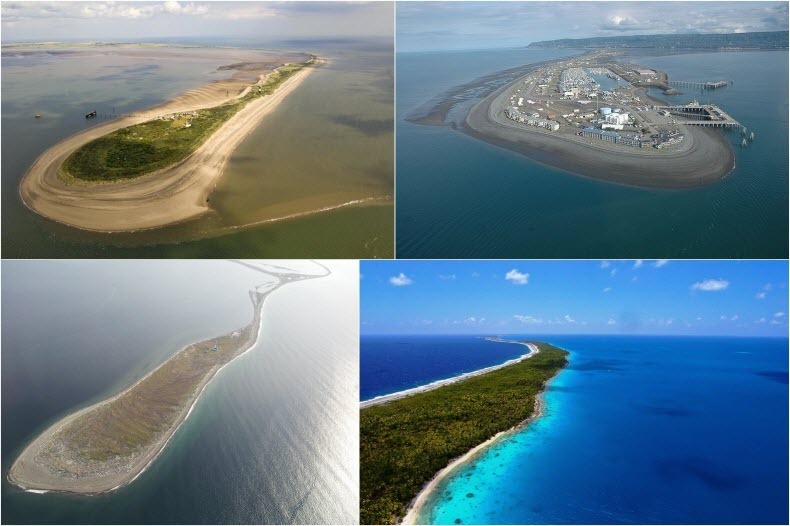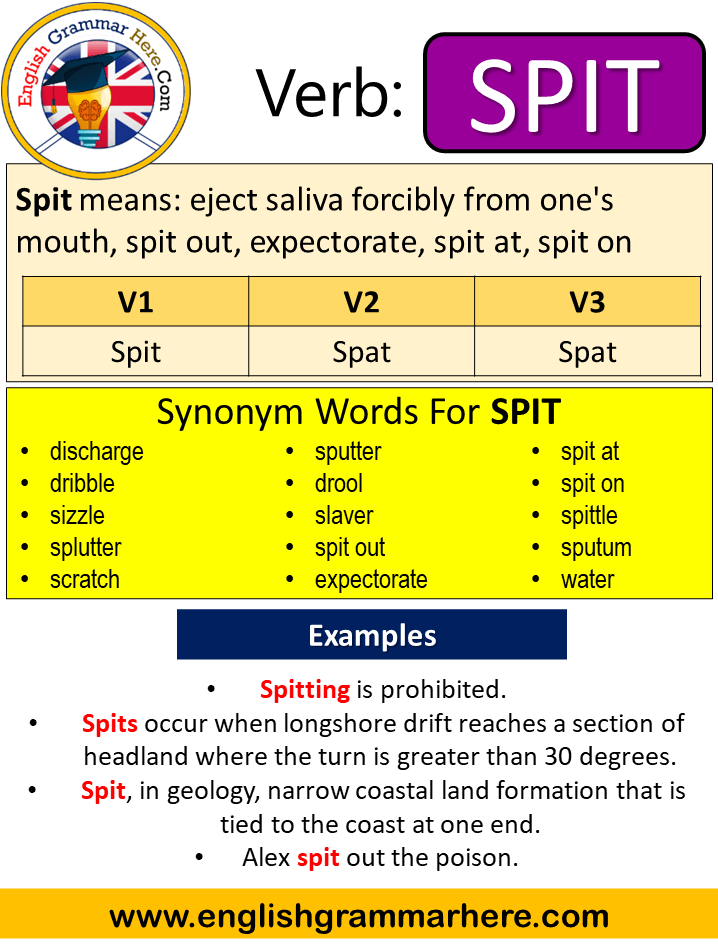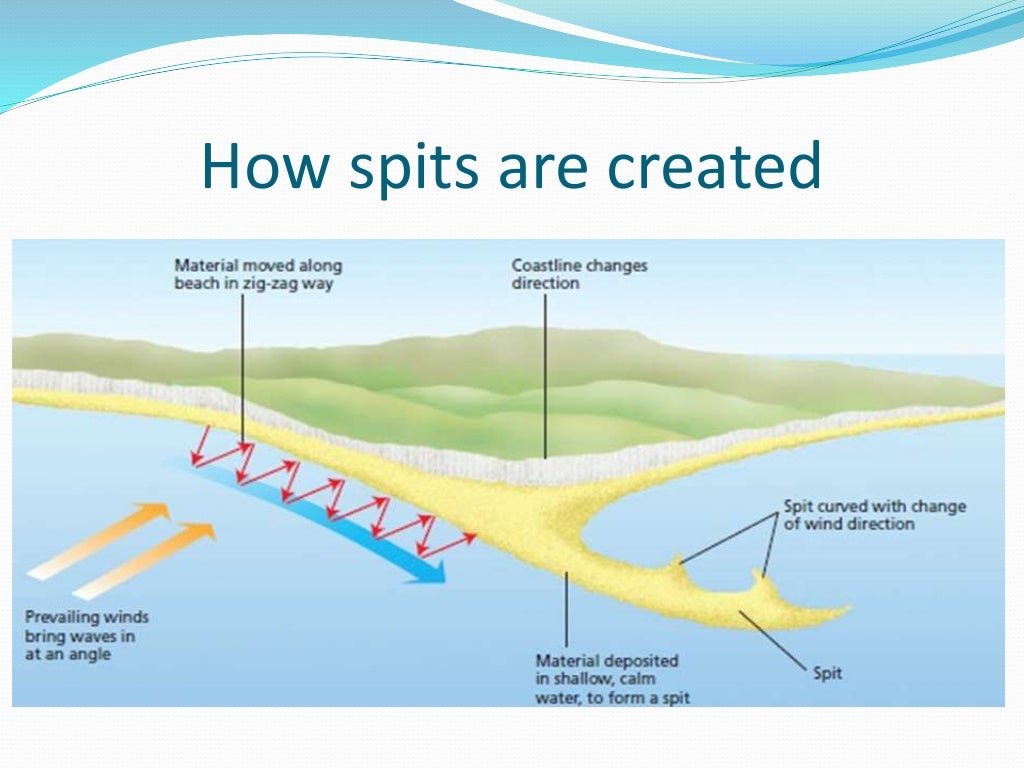How Does A Spit Form
How Does A Spit Form - This is physical geography, where a spit is a stretch of beach that juts out into the sea, and backwash is the force with which the waves return to the sea causing it to. The prevailing wind blows at an angle to the coastline, resulting in longshore drift. Web a spit is formed due to the process of the long shore drift, the waves approach the beach in the direction of the prevailing winds, this causes the sediment to be pushed up the beach. Sudden change in coastline causes a spit. In humans, saliva is around 99% water, plus electrolytes, mucus, white blood cells, epithelial cells (from which dna can be extracted), enzymes (such as lipase and amylase), antimicrobial agents (such as secretory iga, and lysozymes). The enzymes found in saliva are essential in beginning the process of digestion of dietary starch… Spits frequently form where the coast abruptly changes direction and often occur across the. To eject (something) from the mouth : To utter with a spitting. Web how does a spit form?
This is physical geography, where a spit is a stretch of beach that juts out into the sea, and backwash is the force with which the waves return to the sea causing it to. It is joined to the mainland at one end. Web the angle of swash is determined by the prevailing wind. The sediment is deposited by waves. The prevailing wind blows at an angle to the coastline, resulting in longshore drift. To express (unpleasant or malicious feelings) by or as if by spitting. To utter with a spitting. Web a spit is created by deposition. Web to spit is to propel saliva—which is also called spit—from your mouth. Beach feeds sediment outwards to grown away from coast.
It is joined to the mainland at one end. Web spit, in geology, narrow coastal land formation that is tied to the coast at one end. Web spit (landform) a spit contrasted with other coastal landforms. Web how does spit form? To utter with a spitting. Web a spit or sandspit is a deposition bar or beach landform off coasts or lake shores. It forms when sediment builds up and a landmass is left. To eject (something) from the mouth : These glands are found on the inside of each cheek, on the bottom of the mouth, and under the jaw at the. Web the slippery stuff is produced by the salivary (say:
Most Spectacular Spits on Earth
Generally speaking, it's rude to spit, particularly if you're at a fancy dinner party. It forms when sediment builds up and a landmass is left. To eject (something) from the mouth : Web a spit is a land form found off coasts. To utter with a spitting.
Spit Past Simple, Simple Past Tense of Spit Past Participle, V1 V2 V3
Web the slippery stuff is produced by the salivary (say: The prevailing wind blows at an angle to the coastline, resulting in longshore drift. Web a spit is formed due to the process of the long shore drift, the waves approach the beach in the direction of the prevailing winds, this causes the sediment to be pushed up the beach..
Formation of Sand Spit and Bay Barrier IntechOpen
I scolded the child for spitting at another student. Web britannica dictionary definition of spit. The enzymes found in saliva are essential in beginning the process of digestion of dietary starch… Web a spit is a land form found off coasts. Web the slippery stuff is produced by the salivary (say:
Spit (landform) Wikipedia
These glands are found on the inside of each cheek, on the bottom of the mouth, and under the jaw at the. Generally speaking, it's rude to spit, particularly if you're at a fancy dinner party. To eject (something) from the mouth : The sediment is deposited by waves. Web spit (landform) a spit contrasted with other coastal landforms.
Coastal spits YouTube
These glands are found on the inside of each cheek, on the bottom of the mouth, and under the jaw at the. Web spits can form a recurved hook as to secondary winds cause sediment deposition to occur at a different angle than previously. She saw him spit on the sidewalk. In humans, saliva is around 99% water, plus electrolytes,.
Coasts Igcse Geography Gambaran
Web a spit is created by deposition. Generally speaking, it's rude to spit, particularly if you're at a fancy dinner party. Spits frequently form where the coast abruptly changes direction and often occur across the. It is joined to the mainland at one end. Saliva (commonly referred to as spit) is an extracellular fluid produced and secreted by salivary glands.
This website gives a good overview of coastal landforms of deposition
In humans, saliva is around 99% water, plus electrolytes, mucus, white blood cells, epithelial cells (from which dna can be extracted), enzymes (such as lipase and amylase), antimicrobial agents (such as secretory iga, and lysozymes). To force saliva from your mouth. Web spit (landform) a spit contrasted with other coastal landforms. A spit is a stretch of land or sand.
Depositionfeatures
Web the spit coastal feature or the spit geography is largely formed by the deposition of sediments like the sand by the huge water bodies such as the oceans or. Spits are formed by longshore drift in areas of relatively shallow and sheltered water where there is a change in. Web a spit is formed due to the process of.
PPT Depositional coastal landforms Beaches, Spits and Bars
To force saliva from your mouth. The sediment is deposited by waves. Beach feeds sediment outwards to grown away from coast. Spits frequently form where the coast abruptly changes direction and often occur across the. Web the spit coastal feature or the spit geography is largely formed by the deposition of sediments like the sand by the huge water bodies.
Calculation results for elongation of sand spit along the shoreline on
Beach feeds sediment outwards to grown away from coast. Web a spit is formed due to the process of the long shore drift, the waves approach the beach in the direction of the prevailing winds, this causes the sediment to be pushed up the beach. To eject (something) from the mouth : Spits are formed by longshore drift in areas.
Web Britannica Dictionary Definition Of Spit.
The enzymes found in saliva are essential in beginning the process of digestion of dietary starch… Beach feeds sediment outwards to grown away from coast. A salt marsh can form behind a spit if an estuary is. Web spit, in geology, narrow coastal land formation that is tied to the coast at one end.
This Is Called Longshore Drift.
The sediment is deposited by waves. To force saliva from your mouth. To utter with a spitting. A spit is a stretch of land or sand which projects out to sea.
Web A Spit Is Created By Deposition.
I scolded the child for spitting at another student. This is physical geography, where a spit is a stretch of beach that juts out into the sea, and backwash is the force with which the waves return to the sea causing it to. Wave come at an angle causing longshore drift. Saliva (commonly referred to as spit) is an extracellular fluid produced and secreted by salivary glands in the mouth.
Web Spits Can Form A Recurved Hook As To Secondary Winds Cause Sediment Deposition To Occur At A Different Angle Than Previously.
Spits are formed by longshore drift in areas of relatively shallow and sheltered water where there is a change in. Spits frequently form where the coast abruptly changes direction and often occur across the. Web a spit is formed due to the process of the long shore drift, the waves approach the beach in the direction of the prevailing winds, this causes the sediment to be pushed up the beach. These glands are found on the inside of each cheek, on the bottom of the mouth, and under the jaw at the.









